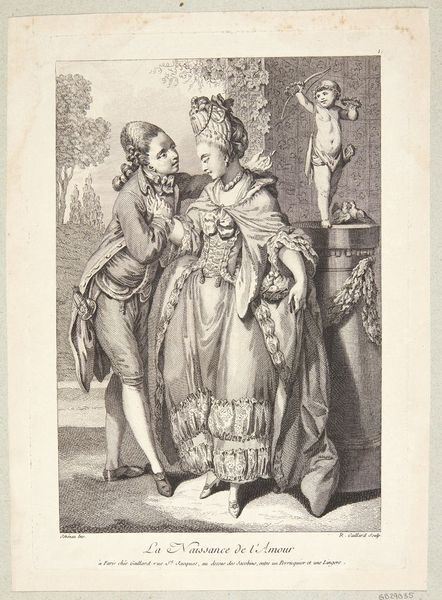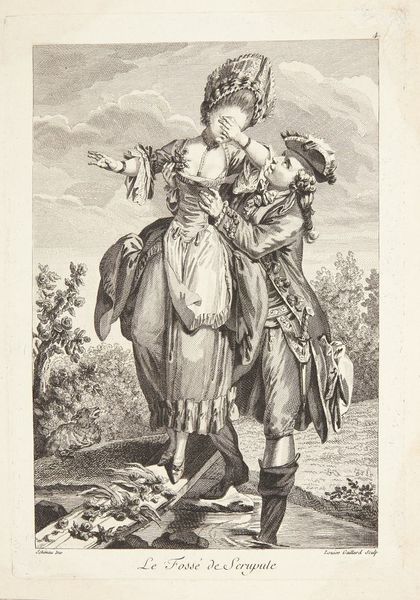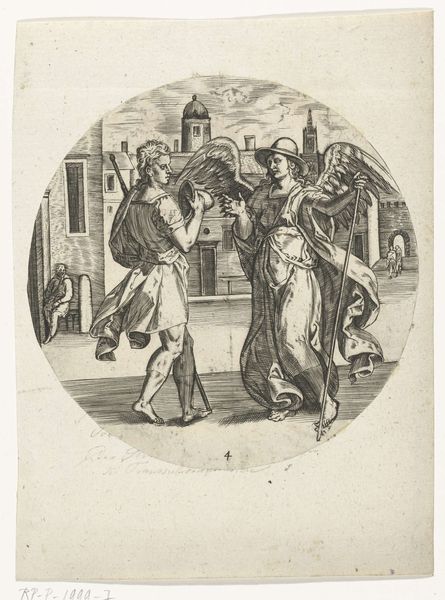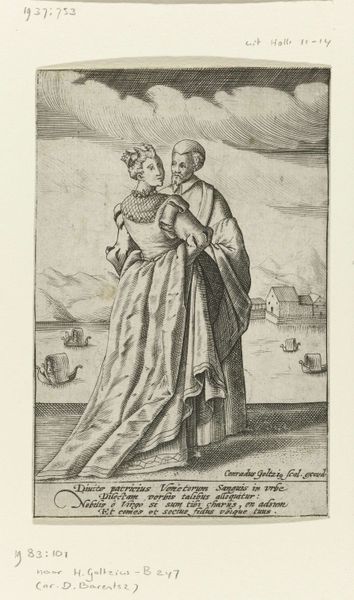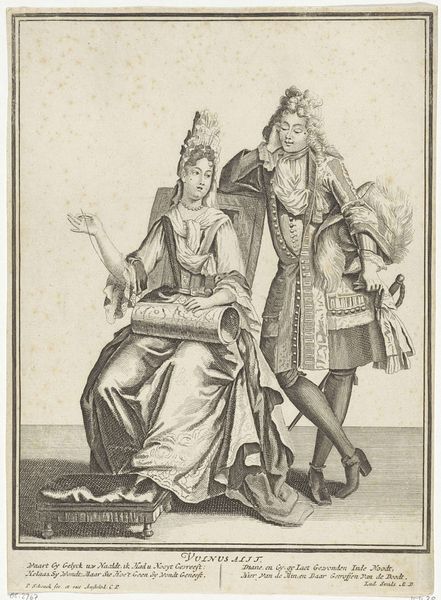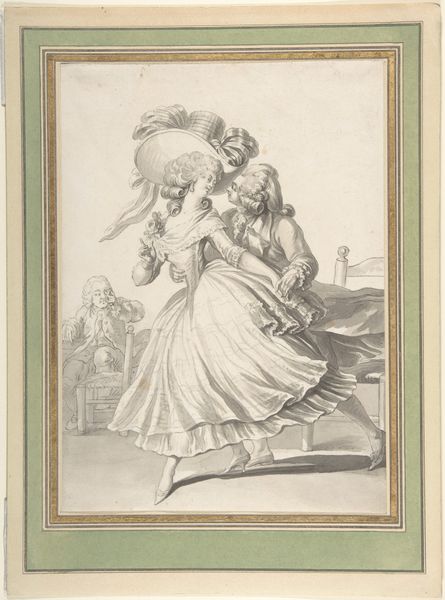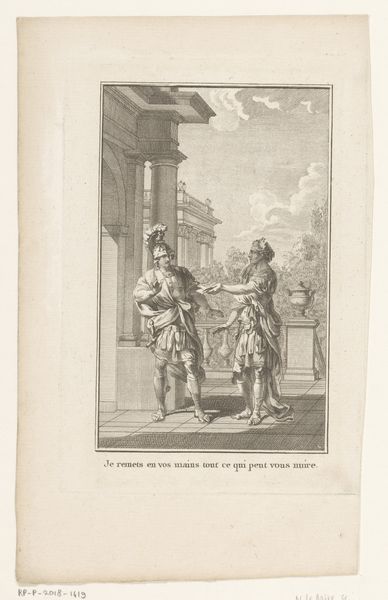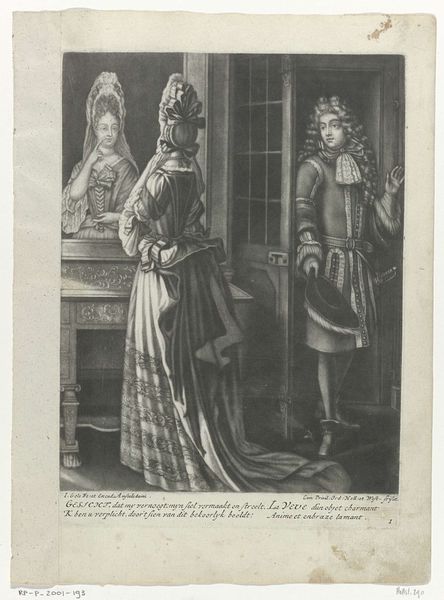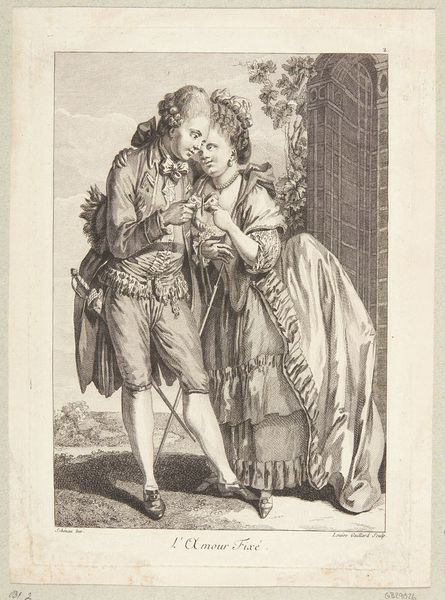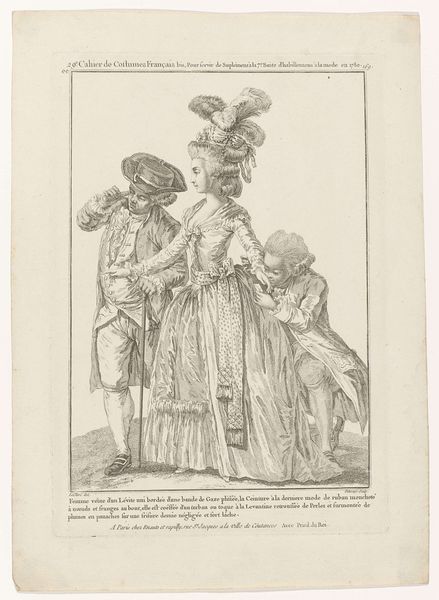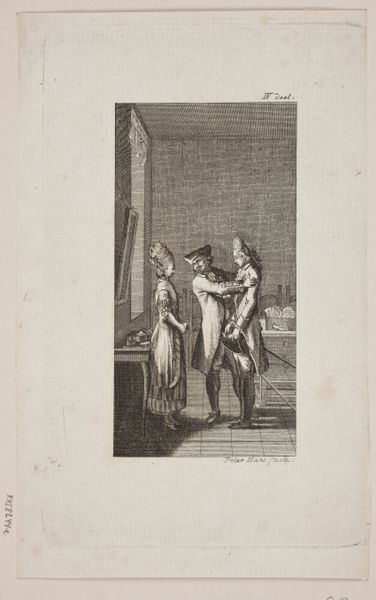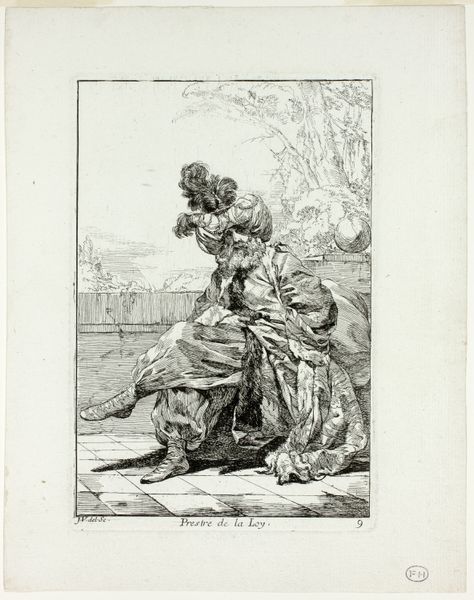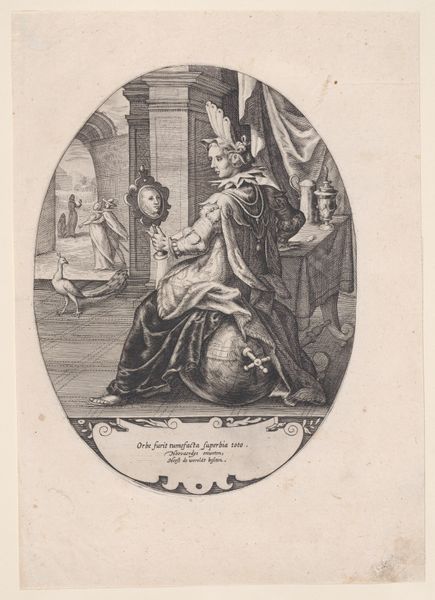
To elskende, som vender hinanden ryggen (La Brouille) 1770
0:00
0:00
print, engraving
# print
#
landscape
#
caricature
#
figuration
#
line
#
genre-painting
#
history-painting
#
engraving
Dimensions: 270 mm (height) x 189 mm (width) (plademaal)
Curator: Looking at "To elskende, som vender hinanden ryggen" – or "La Brouille" – created in 1770 by Louise Gaillard, it’s impossible not to delve into the socio-political context of relationships during that era. What stands out to you initially about this print? Editor: My first impression is the dramatic tension captured in simple lines; the artist’s name means “the quarrel," no? Their postures alone speak volumes about pride and wounded feelings. Curator: Exactly. Examining the iconography of their turned backs, a potent symbol of estrangement across cultures becomes so powerful in this visual representation. It hints at a society deeply entrenched in rituals of courtship and the potential fallout from their transgressions. Consider gender roles then—how were women confined, and what power did they wield? Editor: The discarded letters lying near the woman suggest broken vows or misunderstandings, a shattered promise rendered so universally and personally. You can almost read into this visual rendering the complexities of courtly love, betrayal, and the unspoken pressures. How are these archetypes echoed through contemporary visual culture? Curator: Contemporary readings could view the power dynamics inherent in relationships, focusing on gaslighting, miscommunication, or even oppression disguised as affection. It reflects today’s urgent need to deconstruct systemic imbalances in social encounters. The landscape and staging, too, place this quarrel in a space of privilege; does that complicate its relatability? Editor: Even removed from its context, the universality of heartbreak speaks clearly across time. The symbols remain—the rejection of touch, the eloquence of averted eyes. While specific socio-political pressures of their era are distant, the universal nature of interpersonal dynamics remain poignant. Curator: Agreed. Analyzing "La Brouille" offers insight into its world and a valuable lens for evaluating social justice issues mirrored in art and life. Editor: It encourages reflection not just on visual memory but how we interpret the ongoing drama of human connection.
Comments
No comments
Be the first to comment and join the conversation on the ultimate creative platform.
